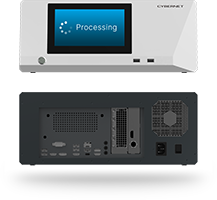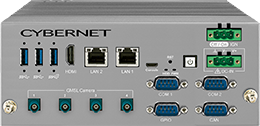There’s no denying that artificial intelligence (AI) is the hot-button topic in the technology world. But AI programs are just that, programs. They require hardware like dedicated AI computers to run on, and those PCs require specialized chips and integrated circuits to support the incredible processing demands that AI places upon them.
Understanding the differences between the types of AI-capable computer chips is critical for effectively implementing them in your workplace.
Graphical Processing Units
The first and most common solution for AI hardware is graphical processing units (GPUs). GPUs were originally developed for video games and can simulate a virtual world’s graphics, physics, lighting, and more.
To do all this, GPUs specialize in parallel processing, performing multiple tasks simultaneously (or in parallel). This is in contrast with CPUs, which are better at processing a single task extremely quickly. This ability to handle hundreds or even thousands of parallel tasks also enables machine learning, where algorithms “learn” to make predictions and classifications based on the data they’re given.
Over the course of thousands, even millions of predictions, the algorithm gets better and better at its job. By running these predictions in parallel with a GPU, the program learns much faster than it would otherwise. This has made GPUs the most popular solution for AI chips and hardware and has catapulted GPU manufacturers like NVIDIA to incredible commercial success in the past few years.
Application-Specific Integrated Circuits
Application-specific integrated circuits, or ASICs, are exactly what their name implies: integrated circuits custom-built for a specific purpose. ASIC chips are designed for a specific customer, application, or market and are exceptionally efficient at their intended purpose. An ASIC’s circuitry is physically optimized for a specific task with hardwired connections that cannot be changed. ASICs designed specifically for AI can perform calculations and power learning models incredibly quickly, but they are also incredibly limited.
Because an ASIC’s transistors are arranged in a fixed, unchangeable arrangement, they cannot be repurposed for a different task. ASICs also have extremely high initial costs due to the time and money it takes to test and iterate their designs before they even reach the market.
For this reason, ASICs are primarily used in more experimental, bleeding-edge applications that may not necessarily be practical for common business or industrial applications.
Field-Programmable Gate Arrays
Field-programmable gate arrays (FPGAs) are a type of integrated circuit that is designed to be programmed and reprogrammed as needed. This makes them the exact opposite of ASICs, as an FPGA can easily be altered depending on the needs of the user.
An FPGA’s logic gates can be changed as needed, which makes them perfect for experimental roles or applications that must go through multiple iterations. FPGAs also have a lower power draw than either GPUs or ASICs, which is useful for applications where electricity is at a premium, such as in a Power over Ethernet computer.
However, this adaptability is also the biggest challenge for implementing FPGAs effectively. FPGAs are highly labor-intensive to use and require specialized programming knowledge such as hardware description language. Their lower power requirements also mean they cannot meet exceptionally demanding tasks. Lastly, the intensive labor requirements, higher material costs, and lack of broad support mean that FPGAs can be difficult to implement for smaller enterprises.
Implement AI Computing with Cybernet
Taking advantage of AI’s computing and predictive power can open up brand-new opportunities for businesses and healthcare groups alike. But using AI effectively requires understanding the hardware that powers it as well. Just as importantly, it also requires dedicated AI computers that are expertly manufactured and designed specifically for their industry, like medical AI box PCs with a full range of certifications that the sector requires.
If your company is considering adding AI to its workflow, contact the team at Cybernet Manufacturing. We’d be happy to explore our range of AI box PCs with you.

